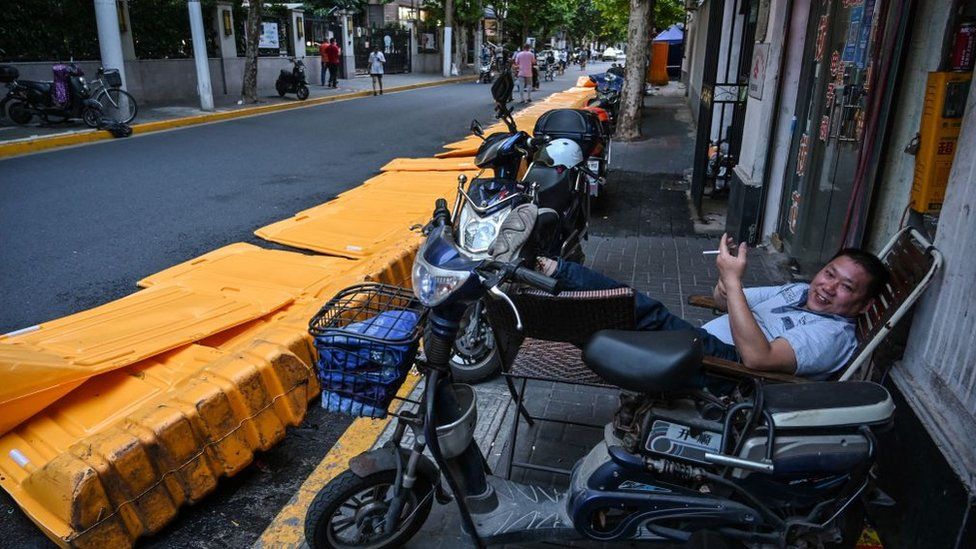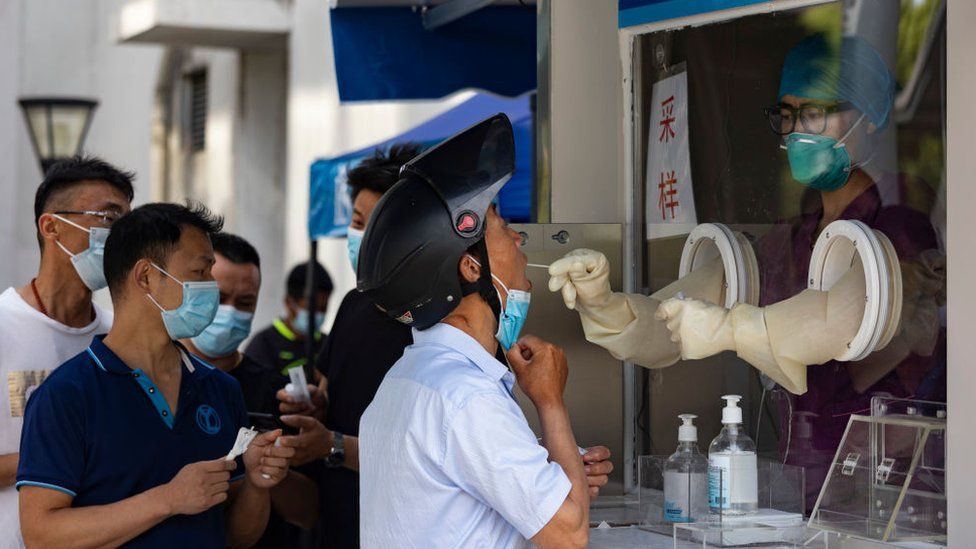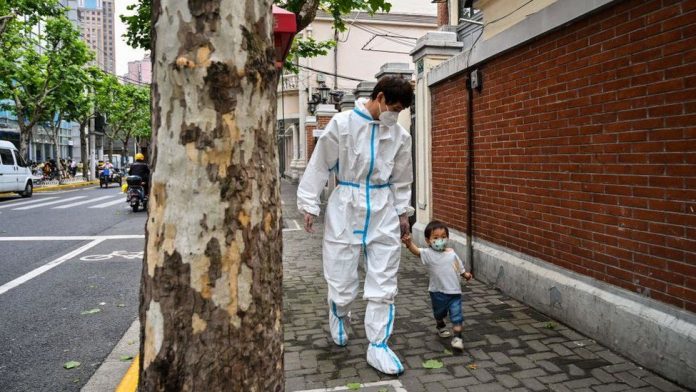It was supposed to last just nine days – a staggered lockdown to lessen the impact on Shanghai’s economy, state media said.
It lasted 65 days. It crippled the city and scarred its people.
Restrictions are now being eased as quickly as they were imposed. There’s no gradual process over several weeks. Instead there’s a big bang – one day when most of the emergency rules and regulations are simply being lifted.
The relief is immense – for generations of some families who’ve lived together behind a locked front door for more than two months; for workers who’ve lived in tents inside factories where they’ve carried on working; for the shop and restaurant owners whose livelihood ground to a halt; for the thousands of people forced to leave their homes and sent to quarantine centres; and for the almost 25 million people who live in Shanghai.
Now the onus is on a full-speed-ahead opening up. Business, transport, production, consumption. The pendulum has swung back.
One businessman I know told me the pressure is on from Shanghai’s government to get going – and quickly. They don’t want to hear about the “lockdown” anymore.
 IMAGE SOURCE,HECTOR RETAMAL
IMAGE SOURCE,HECTOR RETAMALBut this is not going to be a full lifting of the lockdown. It’s a significant easing of the restrictions, which will allow most people to move freely around the city. It is a big step back towards “normal”. But this is also a new “normal”.
At least 650,000 residents are still confined to their homes which remain classified as “sealed off” or “closed off” zones. A basic service has resumed on public transport. Shops have opened, with larger ones operating at 75% capacity. Restaurants can resume serving but dining in is not allowed. Cinemas, museums and gyms remain closed. And most children will not return to face to face schooling.
The freedom granted after more than two months of being locked down comes with conditions attached. These conditions are designed to allow the government to constantly monitor who goes where, when and how healthy they are.
New measures that weren’t in place before the lockdown mean all residents will now be required to show a green health code – on their smartphone – to leave their home compound or building and access most places.
Those who wish to move around the city on public transport or go to the bank, a restaurant or a market will be required to show a negative PCR test result, no older than 72 hours.
 IMAGE SOURCE,HUGO HU
IMAGE SOURCE,HUGO HUGetting out of the city remains problematic. Restrictions on travel around Shanghai are being largely lifted, but restrictions on leaving remain.
Any resident travelling to another city in China faces quarantine of between 7-14 days on their return. For now it’s easier to fly out of Shanghai to foreign climes than it is to go an hour down the rails on a high-speed train to Hangzhou.
For some this was a harsh but necessary measure to contain Covid-19 and adhere to President Xi Jinping’s “zero-Covid” strategy which has, largely, prevented the virus which first emerged here from returning. For others it’s been a national – even international – embarrassment, spurred along by political verve, with an almost incalculable impact on the people that live and work here.
China’s overall policy of “dynamic zero Covid” remains very much in place.
Any new confirmed cases of Covid-19 in Shanghai will mean people are removed to hospital or a central quarantine facility. Close contacts will also face the prospect of removal to quarantine and the area immediately around where they live being locked down – again.





















